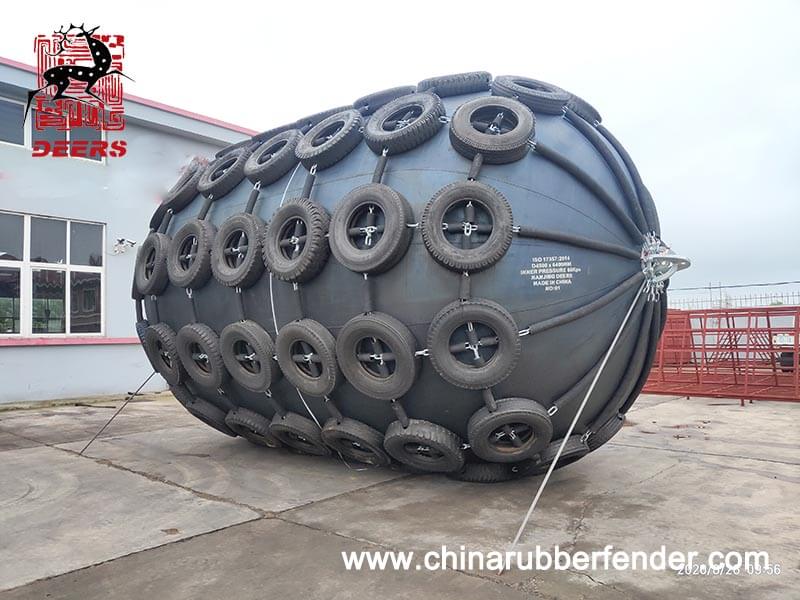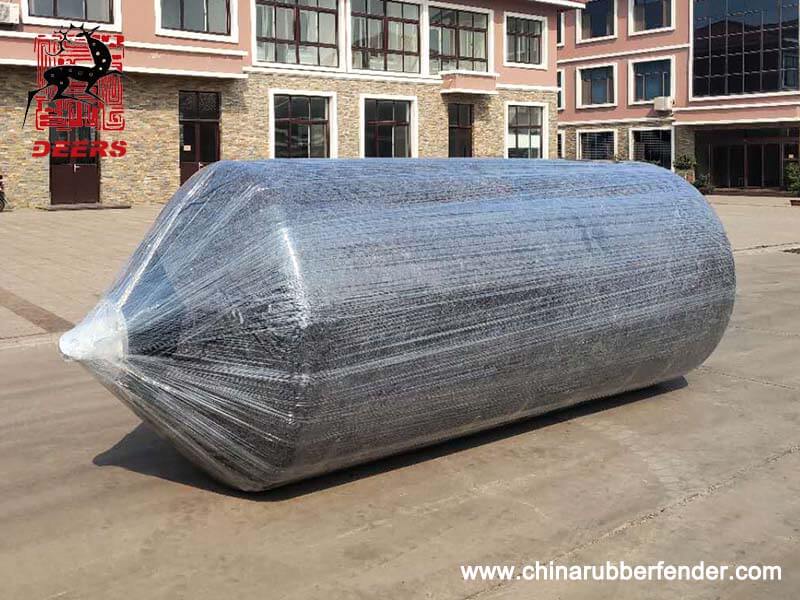Floating fenders types:pneumatic vs foam fender
Floating fenders utilize the compressibility and elasticity of air to ensure highly consistent performance. Taking the pressure off in a variety of environments these versatile fenders maintain a large clearance between hull and jetty or other vessels. Floating rubber fender has good floating performance, and don’t affect by tide scope, the fender can be kept at an ideal waterline.
A key feature of floating rubber fenders is the products of excellent abrasion resistance. This creates a low friction surface, which enables fenders to provide exceptional impact absorption properties while maintaining durability. The design and selection of floating fenders can be determined according to the maximum energy absorption under specific conditions. We should calculate and compare the energy requirements under the following conditions; the kinetic energy of the ship when or after berthing; the energy of the ship relative to the ship and the dock.
Floating fenders types compare
Type 1: pneumatic fender
Pneumatic design is fast, easy to deploy, and reduces costs through low maintenance. Composed of multiple layers of thick rubber, strong nylon fabric, and tyre cord they will not deteriorate under cyclic loads and a high level of buoyancy is maintained.
pneumatic fender functions as a critical protective medium against collision during Ship-to-Ship (STS) transfer operations and Ship-to-Dock (STD) berthing & mooring operations. Floating pneumatic rubber fenders also have the advantage of absorbing a large of amount energy, and the unit surface pressure acting upon the ship is low. Hence, floating pneumatic fenders have become an ideal ship protection medium used extensively by large tankers, LPG vessels, ocean platforms, bulk carriers, floating structures, large docks, harbors, jetties & wharves.
Type 2: floating foam fender
Foam fenders employ a closed-cell structure keeping water out. The skin and reinforcement are applied simultaneously giving unrivaled durability. The foam filled mudguard is made of high-quality foam covered with a hard polyurethane skin. The performance of foam fenders can be changed by changing the foam level. Compared with fenders of the same size, this also makes foam filled fenders more flexible and can meet different berthing energy and reaction force requirements. Foam filled mudguards can also be equipped with chains and tire nets for rough applications.
Since there is no air pressure inside the fender, there is no risk of deflation, bursting, or sinking. Since there is no end fittings such as safety valves and ball valves, foam-filled fenders require less maintenance than pneumatic fenders. However, due to the higher cost of inflation, foam-filled fenders with a diameter greater than 2.2 meters are generally more expensive than pneumatic fenders.
Floating fender should have its function properly maintained based on the maintenance plan so that a mooring facility and port transportation facility will meet the required performance over a service period.



